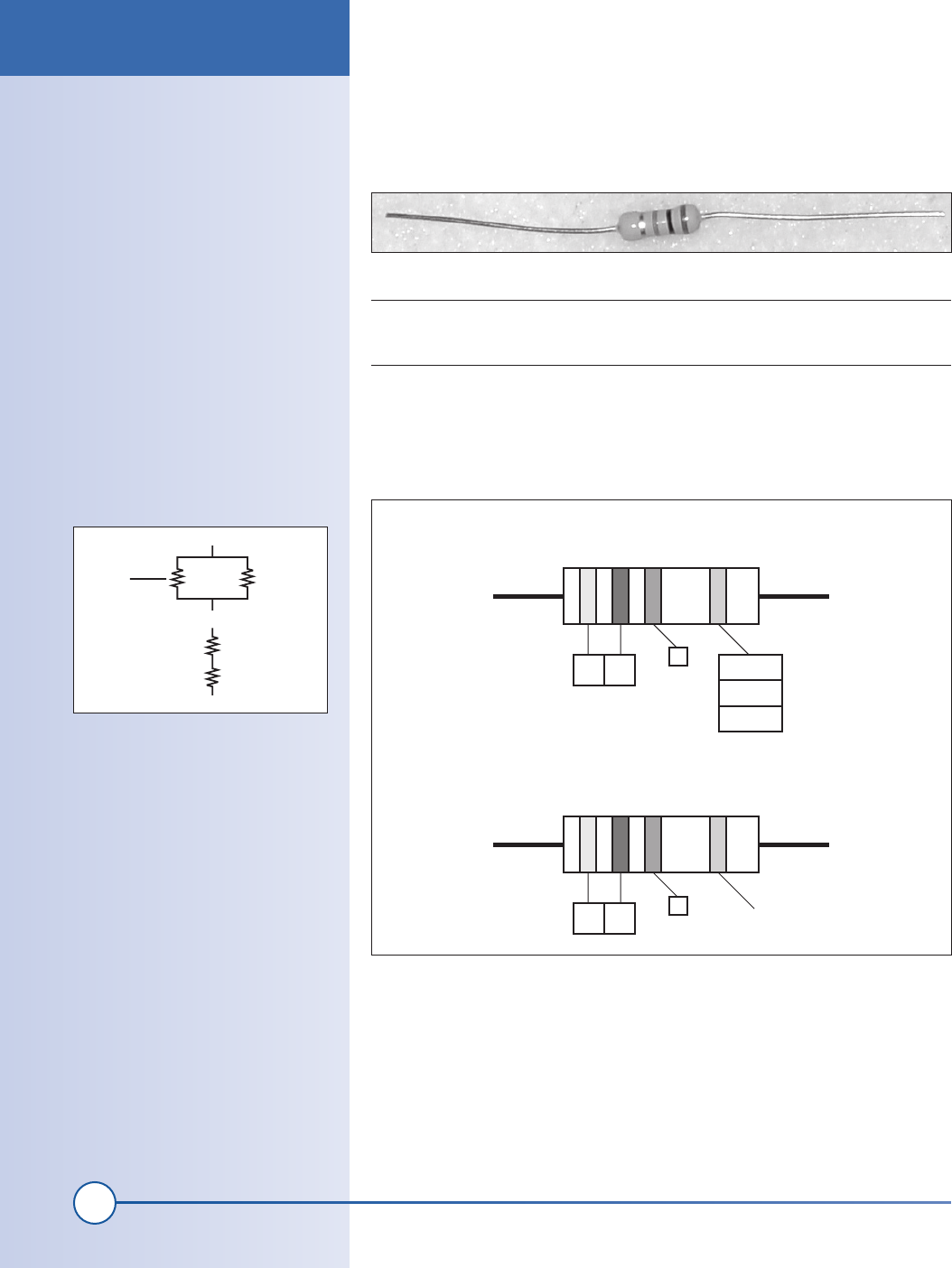
118
Part II: Advanced Hacks, Tools, and Techniques
How to Identify Resistor Values
One of the more common electronic components is the resistor. You can see
what one looks like in Figure II-1.
A resistor reduces, or resists, the flow of electrical current. Think of it as a dam
that holds back water, letting only a certain amount flow through.
A resistor has its resistance value in Ohms marked with color bands on its
side. Each color band represents a number you can plug into the equation
illustrated in Figure II-2. The values for the colors are given in Table II-1.
Hold the resistor so that the
three closely grouped color
bands are to the left
YX x 10
Z
Gold
Silver
(No color)
5%
10%
20%
First digit
of resistance
value
Second digit
of resistance
value
Exponent of
multiplier
Value tolerance
Yellow Purple Red Gold
Example
74 x 10
2
= 4700 (+/-5%) Ohms
Figure II-2: Calculating resistor values
Figure II-1: Resistor
Parallel connection
R
1
R
2
R
total
=
R
1
x R
2
R
1
+ R
2
R
1
R
2
R
total
= R
1
+ R
2
Series connection
Combining Resistors
Resistors can be combined to change
the net value. If two resistors are
combined in series, their values are
added. If they are combined in paral-
lel, their values are determined by the
equations depicted below.
How to Identify Resistor Values
part2.indd 118
1/13/2002 4:11:54 PM
Get Hardware Hacking Projects for Geeks now with the O’Reilly learning platform.
O’Reilly members experience books, live events, courses curated by job role, and more from O’Reilly and nearly 200 top publishers.

